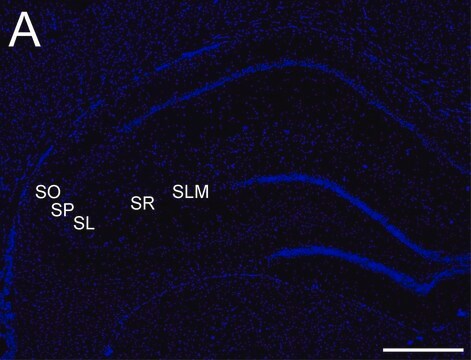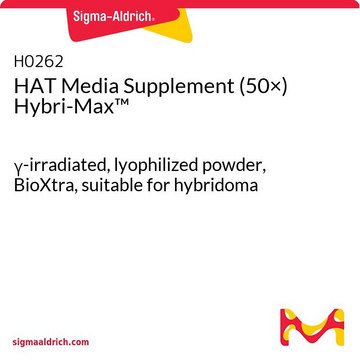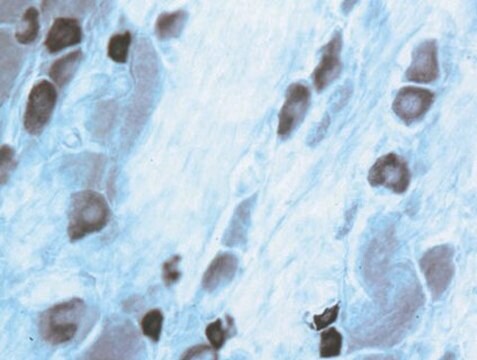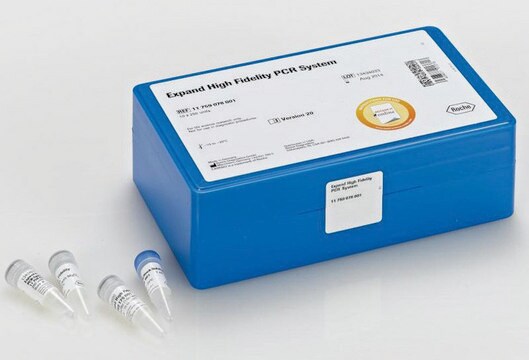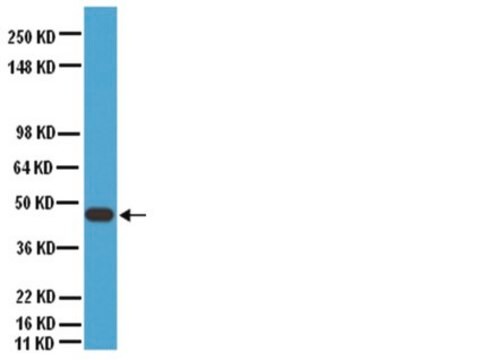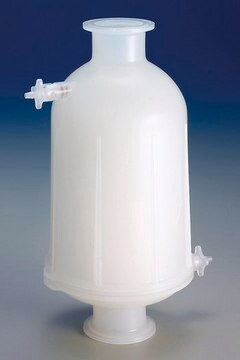MAB3100
Anti-Connexin 45 Antibody, near CT, cytoplasmic, clone 8A11.2
clone 8A11.2, Chemicon®, from mouse
Sinónimos:
Cx45, Gap Junction gamma-1 protein, Gap Junction alpha-7 protein, Cx-45, GJA7 protein, GJC1 protein
About This Item
Productos recomendados
biological source
mouse
Quality Level
antibody form
purified immunoglobulin
antibody product type
primary antibodies
clone
8A11.2, monoclonal
species reactivity
dog (Wang, et al 2001), rabbit (Chaytor, et al 2005), chicken (Elenes, et al 2001), mouse, human, rat (Sorensen, et al 2008)
manufacturer/tradename
Chemicon®
technique(s)
immunocytochemistry: suitable
immunohistochemistry: suitable
western blot: suitable
isotype
IgG1
UniProt accession no.
shipped in
wet ice
target post-translational modification
unmodified
Gene Information
dog ... Gjc1(490936)
human ... GJC1(10052)
mouse ... Gjc1(14615)
rat ... Gjc1(266706)
General description
Specificity
Immunogen
Application
Immunohistochemistry: fresh frozen, methanol fixed sections {Ujiie H et al (2003)}; 4% fixed frozen sections {Ikeda, Y et al 2007). 1-10 µg/mL with overnight incubations; 4% PFA fixed, paraffin-embedded sections {Gluhak-Heinrich, J et al 2007}, 1:50 with enzymatic detection.
Immunocytochemistry: 2% PFA fixed cells (15’, RT), permeabilized with a solution of 0.2% triton X-100/4% BSA {Sorensen et al 2008}.
Optimal working dilutions must be determined by end user.
Cell Structure
Adhesion (CAMs)
Physical form
Storage and Stability
Analysis Note
Cardiac tissue, particularly sinoatrial tissues.
Other Notes
Legal Information
Disclaimer
¿No encuentra el producto adecuado?
Pruebe nuestro Herramienta de selección de productos.
Storage Class
10 - Combustible liquids
wgk_germany
WGK 2
flash_point_f
Not applicable
flash_point_c
Not applicable
Certificados de análisis (COA)
Busque Certificados de análisis (COA) introduciendo el número de lote del producto. Los números de lote se encuentran en la etiqueta del producto después de las palabras «Lot» o «Batch»
¿Ya tiene este producto?
Encuentre la documentación para los productos que ha comprado recientemente en la Biblioteca de documentos.
Nuestro equipo de científicos tiene experiencia en todas las áreas de investigación: Ciencias de la vida, Ciencia de los materiales, Síntesis química, Cromatografía, Analítica y muchas otras.
Póngase en contacto con el Servicio técnico